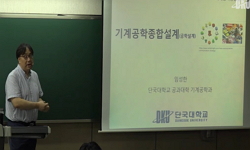본 연구에서는 국내 미설정 보존료인 biphenyl의 분석법 확립을 위해 국내외 다양한 분석법을 조사하고 비교 검토하였다. 식품용 기구 및 용기 포장공전 목재류 시험법의 경우 범용적 장비와 ...
http://chineseinput.net/에서 pinyin(병음)방식으로 중국어를 변환할 수 있습니다.
변환된 중국어를 복사하여 사용하시면 됩니다.
- 中文 을 입력하시려면 zhongwen을 입력하시고 space를누르시면됩니다.
- 北京 을 입력하시려면 beijing을 입력하시고 space를 누르시면 됩니다.
https://www.riss.kr/link?id=A103063125
- 저자
- 발행기관
- 학술지명
- 권호사항
-
발행연도
2017
-
작성언어
Korean
- 주제어
-
등재정보
KCI등재,SCOPUS
-
자료형태
학술저널
- 발행기관 URL
-
수록면
459-464(6쪽)
-
KCI 피인용횟수
0
- DOI식별코드
- 제공처
- 소장기관
-
0
상세조회 -
0
다운로드
부가정보
국문 초록 (Abstract)
녹인 25 mM phosphoric acid(solvent A)와 아세토니트닐에 녹인 25 mM phosphoric acid(solvent B)를 이용하여 gradient로 분석하였다. UV 흡수 파장은 230 nm, 오븐 온도는 40°C, 유속은 1.0 mL/min을 이용하였다. 직선성은 0.999(R2) 이상의 높은 직선성을 보였으며 직선성 각각의 농도에 대한 정밀도는 6.7% 이하, 정확도는 86.7~102.9%, 검량선 내 서로 다른 농도 3가지에 대한 일내 정밀도는 0.7~1.9%, 정확도는 95.8~104.0%로 확인되었다. 일간은 정밀도가 1.6~2.4%, 정확도는 96.7~102.4%로 확인되었다. 검출한계 0.04 μg/mL, 정량한계는 0.13 μg/mL로 측정되었다. 회수율 측정 결과 3가지 농도에서 정밀도는 1.8% 이하이고, 회수율은 92.7~99.4%로 측정되었다. 확립된 biphenyl의 분석법 확립의 적용성 검토를 위해 시료는 총 111건을 수집하였으며, 일본 현지에서 구입한 시료는 30건, 서울 경기 대형마트 및 중소형 식품 도매점에서 81건을 수집하여 총111건에 대해 분석한 결과 모든 시료에서 불검출이 확인되었다. 향후 국내 미설정 보존료인 biphenyl을 사용한 식품에 대해 정량한계(0.13 μg/mL)까지 분석할 수 있는 분석법 확립과 국내에 비의도적으로 혼용될 수 있는 수입식품의 사전사후 관리에 기여될 수 있을 것으로 판단된다.
본 연구에서는 국내 미설정 보존료인 biphenyl의 분석법 확립을 위해 국내외 다양한 분석법을 조사하고 비교 검토하였다. 식품용 기구 및 용기 포장공전 목재류 시험법의 경우 범용적 장비와 비교적 간단한 시험 전처리 방법이지만 회수율이 10% 이하로 측정되었으며 방해 물질 제거가 어려워 효과적인 시료 전처리와 분석방법이 될 수 없음을 확인하였다. 식품공전의 잔류농약 분석법의 경우 시료 전처리에 사용된 추출 용매는 아세토니트릴이고 정제는 아미노프로필 카트리지를 이용하였으며, 정성 및 정량분석이 가능하고 효과적으로 matrix를 제거하는 장점이 있으나, 30% 이하의 회수율과 전처리 시간이 많이 소요되는 것을 확인하였다. AOAC official method 분석법의 경우 n-heptane을 이용하여 추출 후 무수황산나트륨 칼럼을 이용하여 정제한 뒤 TLC와 spectrophotometry를 이용하여 확인 시험 결과 시료 전처리에 시간 소요가 많고 재현성과 숙련도가 요구되는 단점이 확인되었다. QuEchERs 방법은 시료를 아세토니트릴로 추출 후 dispersive SPE kit을 이용하여 전처리 후 GC-MS와 HPLC를 이용하여 확인 결과 시료 전처리 시간이 비교적 짧고 좋은 재현성이 있는 장점이 있으나, 소모품 사용 시 경제적 부담이 큰 단점을 가지고 있다. Anklam E 등의 시험법은 GC-FID이며 디클로로메탄, 메탄올, 헥산을 이용한 단순 추출 후 2시간 방치한 다음 GC-MS와 GC-FID로 분석하는데, 일부 시료에서 효과적인 matrix 제거가 어려운 것으로 확인되었다. 따라서 국내외 여러 시험방법을 검토 및 응용하여 간단한 시료 전처리와 분석법을 확립하였다. 시료 중의 biphenyl 분석에 사용한 칼럼은 Capcellpak UG 120 C18(4.6 mm×250 mm, 5 μm), 이동상은 3차 증류수에
녹인 25 mM phosphoric acid(solvent A)와 아세토니트닐에 녹인 25 mM phosphoric acid(solvent B)를 이용하여 gradient로 분석하였다. UV 흡수 파장은 230 nm, 오븐 온도는 40°C, 유속은 1.0 mL/min을 이용하였다. 직선성은 0.999(R2) 이상의 높은 직선성을 보였으며 직선성 각각의 농도에 대한 정밀도는 6.7% 이하, 정확도는 86.7~102.9%, 검량선 내 서로 다른 농도 3가지에 대한 일내 정밀도는 0.7~1.9%, 정확도는 95.8~104.0%로 확인되었다. 일간은 정밀도가 1.6~2.4%, 정확도는 96.7~102.4%로 확인되었다. 검출한계 0.04 μg/mL, 정량한계는 0.13 μg/mL로 측정되었다. 회수율 측정 결과 3가지 농도에서 정밀도는 1.8% 이하이고, 회수율은 92.7~99.4%로 측정되었다. 확립된 biphenyl의 분석법 확립의 적용성 검토를 위해 시료는 총 111건을 수집하였으며, 일본 현지에서 구입한 시료는 30건, 서울 경기 대형마트 및 중소형 식품 도매점에서 81건을 수집하여 총111건에 대해 분석한 결과 모든 시료에서 불검출이 확인되었다. 향후 국내 미설정 보존료인 biphenyl을 사용한 식품에 대해 정량한계(0.13 μg/mL)까지 분석할 수 있는 분석법 확립과 국내에 비의도적으로 혼용될 수 있는 수입식품의 사전사후 관리에 기여될 수 있을 것으로 판단된다.
다국어 초록 (Multilingual Abstract)
Biphenyl is used as an intermediate in the production of crop protection products, a solvent in pharmaceutical production, and as a component in the preservation of citrus fruits in many countries. Biphenyl is not authorized for use and also does not ...
Biphenyl is used as an intermediate in the production of crop protection products, a solvent in pharmaceutical production, and as a component in the preservation of citrus fruits in many countries. Biphenyl is not authorized for use and also does not have standards or specifications as a food additive in Korea. National and imported food products are likely to contain biphenyl. Therefore, control and management of these products is required. In this study, a simple analytical method was developed and validated using HPLC to determine biphenyl in food. These methods are validated by assessing certain performance parameters: linearity, accuracy, precision, recovery, limit of detection (LOD), and limit of quantitation (LOQ). The calibration curve was obtained from 1.0 to 100.0 μg/mL with satisfactory relative standard deviations (RSD) of 0.999 in the representative sample (orange). In the measurement of quality control (QC) samples, accuracy was in the range of 95.8∼104.0% within normal values. The inter-day and inter-day precision values were less than 2.4% RSD in the measurement of QC samples. Recoveries of biphenyl from spiked orange samples ranged from 92.7 to 99.4% with RSD between 0.7 and 1.7% at levels of 10, 50, and 100 μg/mL. The LOD and LOQ were determined to be 0.04 and 0.13 μg/mL, respectively. These results show that the developed method is appropriate for biphenyl identification and can be used to examine the safety of citrus fruits and surface treatments containing biphenyl residues.
참고문헌 (Reference)
1 Standards for Uses of Food Additives, "Standards for use, according to use categories"
2 KFDA, "Standards and specifications for food utensils, containers and packages"
3 AOAC, "Official Methods of Analysis of AOAC International" Association of Analytical Communities 25-, 1969
4 KFDA, "Korean Food Standards Codex"
5 BRITISH STANDARD, "Foods of plant origin -Determination of pesticide residues using GC-MS and/or LCMS/MS following acetonitrile extraction/partitioning and cleanup by dispersive SPE- QuEChERS-method. Ref. No. BS EN 15662:2008"
6 Saad B, "Determination of ortho-phenylphenol, diphenyl and diphenylamine in apples and oranges using HPLC with fluorescence detection" 84 : 313-317, 2004
7 Takahashi K, "Determination of diphenyl and o-phenylphenol in agricultural products by GC/MS" 49 : 403-406, 2008
8 Sarkhosh M, "Determination of biphenyl and biphenyl oxide in aqueous samples by headspace single drop microextraction coupled to gas chromatography" 23 : 602-609, 2012
9 Anklam E, "A simple method of sample preparation for analysis of biphenyl residues in citrus fruit peels by gas chromatography" 198 : 329-330, 1994
1 Standards for Uses of Food Additives, "Standards for use, according to use categories"
2 KFDA, "Standards and specifications for food utensils, containers and packages"
3 AOAC, "Official Methods of Analysis of AOAC International" Association of Analytical Communities 25-, 1969
4 KFDA, "Korean Food Standards Codex"
5 BRITISH STANDARD, "Foods of plant origin -Determination of pesticide residues using GC-MS and/or LCMS/MS following acetonitrile extraction/partitioning and cleanup by dispersive SPE- QuEChERS-method. Ref. No. BS EN 15662:2008"
6 Saad B, "Determination of ortho-phenylphenol, diphenyl and diphenylamine in apples and oranges using HPLC with fluorescence detection" 84 : 313-317, 2004
7 Takahashi K, "Determination of diphenyl and o-phenylphenol in agricultural products by GC/MS" 49 : 403-406, 2008
8 Sarkhosh M, "Determination of biphenyl and biphenyl oxide in aqueous samples by headspace single drop microextraction coupled to gas chromatography" 23 : 602-609, 2012
9 Anklam E, "A simple method of sample preparation for analysis of biphenyl residues in citrus fruit peels by gas chromatography" 198 : 329-330, 1994
동일학술지(권/호) 다른 논문
-
흑마늘박 추출물의 항균 활성과 미생물 제어를 위한 시금치 세척에의 이용
- 한국식품영양과학회
- 강지훈(Ji Hoon Kang)
- 2017
- KCI등재,SCOPUS
-
참치 톱밥의 첨가가 압출성형 인조육의 품질 특성에 미치는 영향
- 한국식품영양과학회
- 조선영(Sung Young Cho)
- 2017
- KCI등재,SCOPUS
-
글루텐 함량과 수분 함량이 압출성형 분리대두단백의 조직화에 미치는 영향
- 한국식품영양과학회
- 박지훈(Ji-Hoon Park)
- 2017
- KCI등재,SCOPUS
-
효모 종류에 따른 참다래 와인의 발효 및 숙성 중 품질 변화
- 한국식품영양과학회
- 오현정(Hyun-Jeong Oh)
- 2017
- KCI등재,SCOPUS
분석정보
인용정보 인용지수 설명보기
학술지 이력
| 연월일 | 이력구분 | 이력상세 | 등재구분 |
|---|---|---|---|
| 2023 | 평가예정 | 해외DB학술지평가 신청대상 (해외등재 학술지 평가) | |
| 2020-01-01 | 평가 | 등재학술지 유지 (해외등재 학술지 평가) |  |
| 2014-06-24 | 학회명변경 | 한글명 : 한국식품영양과학회지 -> 한국식품영양과학회영문명 : Journal of the Korean Society of Food Science and Nutrition -> The Korean Society of Food Science and Nutrition |  |
| 2014-04-02 | 학회명변경 | 한글명 : 한국식품영양과학회 -> 한국식품영양과학회지영문명 : 미등록 -> Journal of the Korean Society of Food Science and Nutrition |  |
| 2011-01-01 | 평가 | 등재학술지 유지 (등재유지) |  |
| 2009-01-01 | 평가 | 등재학술지 유지 (등재유지) |  |
| 2007-01-01 | 평가 | 등재학술지 유지 (등재유지) |  |
| 2005-01-01 | 평가 | 등재학술지 유지 (등재유지) |  |
| 2002-07-01 | 평가 | 등재학술지 선정 (등재후보2차) |  |
| 2000-01-01 | 평가 | 등재후보학술지 선정 (신규평가) |  |
학술지 인용정보
| 기준연도 | WOS-KCI 통합IF(2년) | KCIF(2년) | KCIF(3년) |
|---|---|---|---|
| 2016 | 1.03 | 1.03 | 1.13 |
| KCIF(4년) | KCIF(5년) | 중심성지수(3년) | 즉시성지수 |
| 1.18 | 1.2 | 1.993 | 0.21 |





 ScienceON
ScienceON DBpia
DBpia







